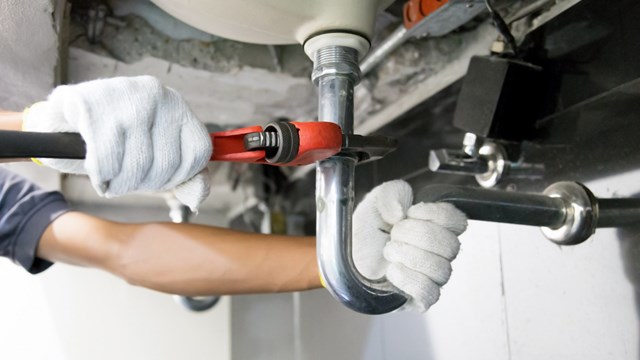
Among the many perils experienced by Floridians during the blackouts and hurricanes that swept the state in the middle of the last decade, non-functioning emergency systems in condominium buildings were a major problem.
As a result, legislation was enacted requiring residential buildings over 75 feet tall to install generators and fuel tanks with a minimum operating capacity for several hours in each of five days following a natural disaster. According to the law, generators must be housed in a four-sided structure, and fuel tanks must be buried.
While the law requiring backup generators for elevators was repealed in 2011, with the committee citing the financial impact this would have on Florida’s condo communities, the code still mandates backup generators for fire pumps and life safety loads, and condo associations may be held legally responsible in a civil lawsuit for failure to properly maintain generators if that failure leads to injury or property damages.
Today’s standby power systems normally provide backup power for fire pumps, emergency lighting, alarm systems and life-safety loads, says Bob Birdsong, president of OK Generators, headquartered in Deerfield Beach. “All the high-rise condo associations in South Florida are required to have standby power systems. Normally the power is required to last for 24 hours, but often it ends up lasting an excess of 48 hours. After that, you run out of fuel. The thought is you will get fuel delivered within that period,” he says.
Fuel Options
Most of the backup systems are powered by diesel, and some also by natural gas or propane. “Natural gas has to be approved, because you are relying on an off-site utility for fuel,” Birdsong continues. “In Florida, natural gas is only available in certain areas, and you still have to get permission to use it because it is an off-site utility.” Diesel is probably used in 60 percent of condo associations in South Florida, while propane and natural gas are probably found in 20 percent in each amount.
“We are partial to diesel because diesel runs more efficiently than natural gas,” says Michael Jansen, owner of Miami-based Megawattage, a turnkey provider of emergency power in South Florida. “With diesel you have to fill the fuel tank,” Jansen says. “With natural gas you are dependent on the utility company. Generally, 99 percent of the condominiums we do business with, even though they have natural gas, we still sell them diesel because it’s a better, more reliable and more efficient system in an emergency, and it runs longer—for days and days and days.”
Diesel generators are generally less expensive than natural gas for the condominium market, Birdsong agrees. Properly maintained, diesel generators can last 30 or 40 years. Unlike gasoline, diesel is a combustible fuel and not a flammable fuel. As such it makes an ideal source for larger generators, he says. For smaller generators, he recommends propane or natural gas as a less expensive option.
Turn on the Juice
According to Jansen, if the utility power goes out, a signal is relayed to the generator and then the power transfers over to the generator. The generator senses it and kicks in.
A high-quality transfer switch and sufficient fuel to run the generator are critical. Transfer switches are the components that transfer the distribution of power from the traditional source to the generator when the power is interrupted or knocked out entirely. Since today’s condominiums have operations that depend on large computer systems, having a reliable transfer switch that immediately links over to the backup generator is one of the most critical elements to the entire system.
All backup power purchases should be made taking into consideration what needs to be powered during a power outage and for how long. For condos and HOAs, this might be hallway lights, emergency lights and exit signs, and gates, for example.
Even with generators to replace the power company for emergency loads, it's too expensive to power each individual unit during an emergency. “Providing power to the individual unit is not practical and is almost never done,” Birdsong says. “The generator would be very large and expensive to power the units.”
Many condos/HOAs do not allow individual units to have generators, but some do—albeit with certain caveats. Gas generators are not allowed inside condos for obvious safety reasons, says Gary Moody, a sales representative for Silent Standby Power Supply LLC, based in Riviera Beach. Unlike most traditional generators found in condos/HOAs, IndoorGenerators, manufactured by Silent Standby Power Supply, are battery-based backup power systems and are designed for individual units that need power for lights, refrigerators and communication equipment or vitals such as home medical equipment.
The most popular ones provide backup power for up to four days. They can be recharged in four different ways, Moody says. These battery systems will not run air conditioners in condos. The company’s products retail from $3,000 to $7,500, depending on what needs power and for what length of time.
If You're Shopping...
Birdsong advises condo associations looking to purchase a backup system to ask neighboring condominiums for recommendations. For installation, you need to use a contractor and for maintenance it has to be a generator company, Birdsong says.
“If you are a smart condominium and do this the right way, one company can do the installation, complete turnkey,” Jansen says. The generator needs to be installed by a licensed contractor. The condominium should hire a consulting engineer who can design a system and write the specification for competitive bids, Birdsong says. The contractor they select should provide a turnkey installation. Permits have to be submitted for review by the municipality.
Each installation job is custom, and the cost of installing a system depends on the location and the size of the generator and the size of the building. Smart contractors should know they don’t want generators in front of the building facing the street. Usually the systems are hidden and can be installed in a dedicated room or obscured by landscaping and architecture. Normally, they can be as big as a car or as large as a bus, Birdsong says.
The system needs to be installed by a professional electrician. The company will have all the contractor licenses to do the job: electrical, mechanical, general and environmental. The condo has to determine their budget.
Choose Qualified Contractor
The property management company should help the condo select the right contractor, and the local zoning and fire departments have to approve the location of the generator. There is a fire code, an electrical code, the building code and the environment code, four separate entities. “I would advise the condo board to find a contractor they trust,” Jansen says. “The company they select should provide the engineering as well as the contracting,” Jansen says. “They should be able to do everything.”
The installation process is customized for each individual condo building, Jansen says, but these are the general steps that need to be taken.
“First you have to do an engineering design, then you have to get permitting for your design,” Jansen says. “After the city and county and environmental groups approve the plans, you have to do a concrete slab installation. You pour cement and put the generator and the fuel tank on top of that slab of cement. (The fuel tank could go somewhere else.) The mechanical piping connection needs to be made between the generator and the fuel tank. Electrical wire installation needs to take place from the generator to the automatic transfer switch and to the main distribution panel for the condominium.”
In most instances, the exhaust from a traditional generator has to be 10 feet away from any opening to the building, Birdsong says. Many local municipality and cities have their own ordinances and laws regarding generators.
The generators come in their own enclosures. Some municipalities require landscaping or fencing around the generator. “We test the generator on the building to make sure it handles the load. All further inspections must be approved by the building department and the environmental department,” Jansen says.
As long as it is installed properly there are no dangers or risks, “ Jansen says. “Generators have been around for decades. Popular brands include Caterpillar, Detroit Diesel, Cummins, Kohler.”
Long Live Electricity
Generators should perform well for years, if treated properly. The typical life span of a generator is 20 to 30 years, if properly maintained, Birdsong says. Maintenance is done in accordance with National Fire Protection Association (NFPA) standards for generators and manufacturer’s recommendations, he says. “We currently offer the customer a quarterly comprehensive inspection. We also train their personnel on the monthly running of the generator. Then we do one annual service, including changing all the filters.” A building transfer test is required to be done monthly by law, Birdsong says.
Condo associations should take out a service contract, usually with the company that did the installation, Jansen says, or with another company if they were not happy with the installation. Normally, the company that does the installation should also do the maintenance and repair.
Standby generators generally do not need a lot of repairs because they only run when the power goes out, or for a half-hour a week, Birdsong says. “They are required to run once a month, and we run them every week because most are unattended. If they are told to run and they don’t run, an alarm will sound.”
Electrical or mechanical failures can happen, he says, but the more the technology improves, the more reliable they are. “Over 70 percent of the service repairs we have are attributable to starting-battery problems,” Birdsong says. “The customer either does not replace them when we tell them to, or they replace them with an incorrect or cheaper battery.”
Generally, a diesel generator should not need a lot of repairs during the first five years of maintenance, Jansen says. “Occasionally, things go bad and need to be replaced. It’s like a car in that sense. At some point, things start breaking. It could be a long time before that happens.”
Peter Malbin is a freelance writer and a regular contributor to The South Florida Cooperator.






Leave a Comment